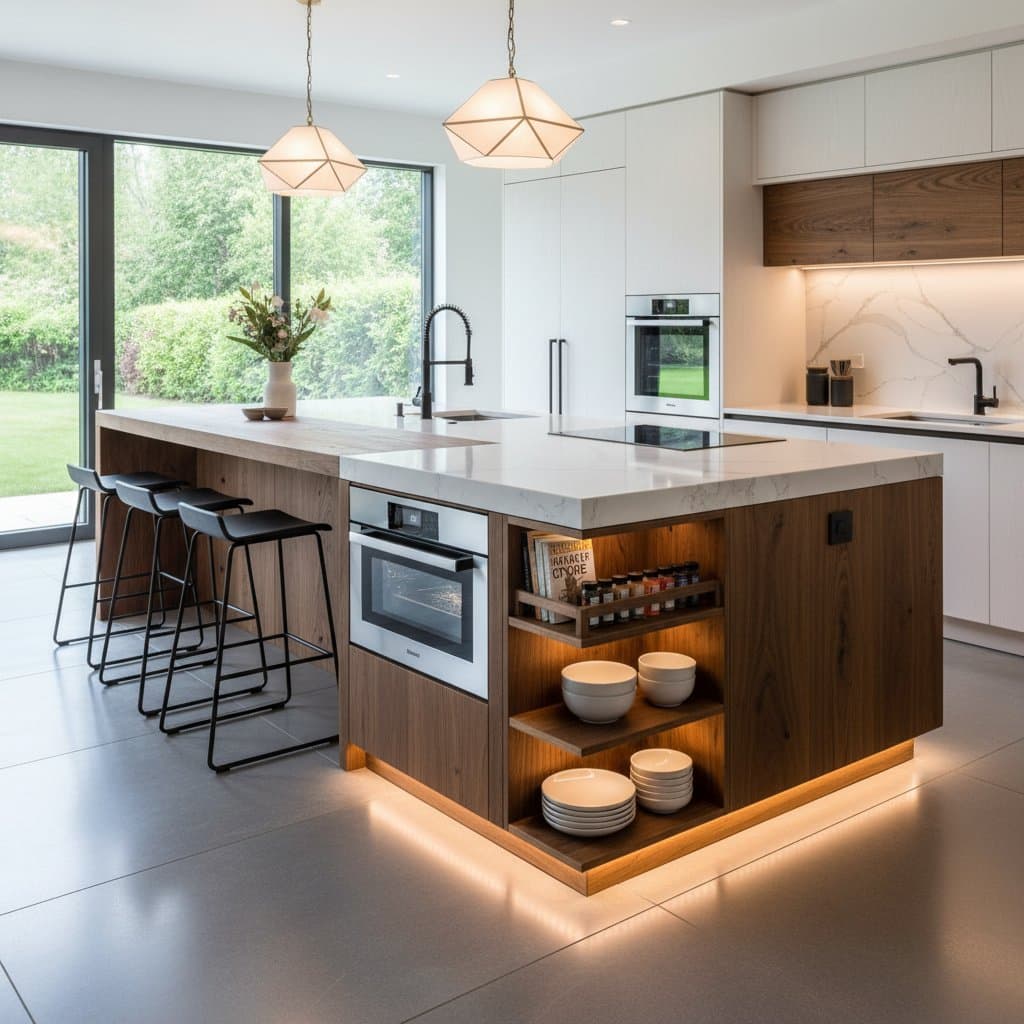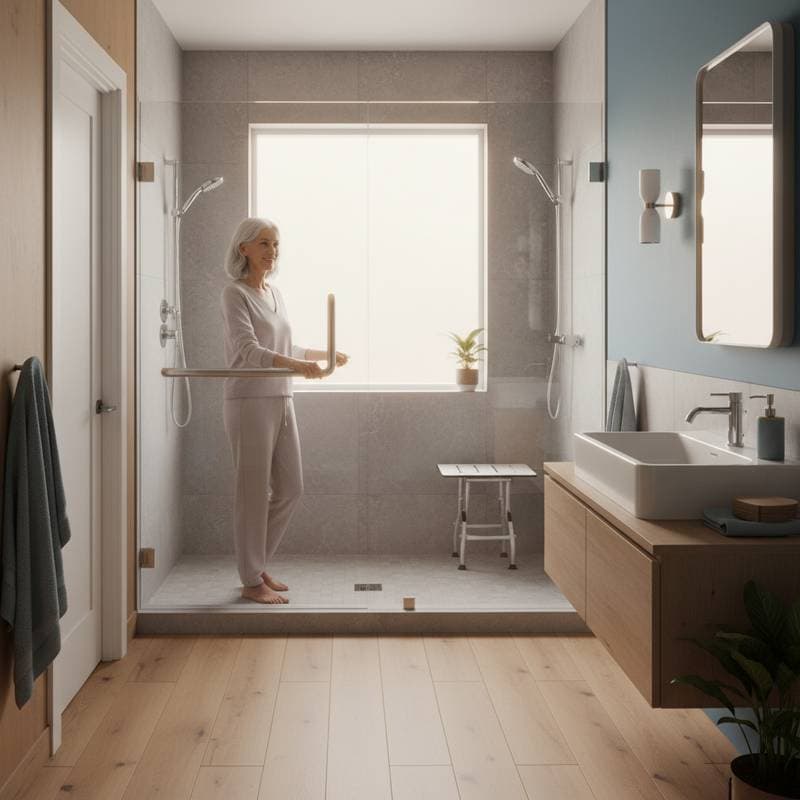Essential Kitchen Island Features to Boost Your Home's Resale Value in 2025
Homeownership brings opportunities to customize living spaces, and the kitchen often emerges as a focal point for both aesthetics and utility. A thoughtfully designed kitchen island enhances daily routines while appealing to prospective buyers. Selecting features that align with current trends ensures the island contributes positively to overall property worth.
Understanding the Role of a Kitchen Island
Kitchen islands fulfill multiple purposes, such as food preparation, casual dining, storage, or even a workspace for remote tasks. Effective designs integrate these elements without overwhelming the room's dimensions or workflow. Consider family cooking habits, seating requirements, and storage demands to guide feature selections. These decisions not only improve immediate usability but also enhance marketability upon resale.
Indicators That Your Kitchen Island Requires an Upgrade
Certain issues signal that an existing island detracts from the kitchen's potential. Examine the surface for damage like chips, persistent stains, or irregularities that hinder cleaning. Assess storage accessibility; cramped or awkward compartments frustrate users and lower perceived value. Evaluate traffic patterns to ensure the island facilitates rather than impedes movement. Insufficient outlets or dim lighting can make the space feel outdated. A style that clashes with surrounding elements diminishes cohesion. Addressing these promptly preserves equity and avoids escalation into major repairs.
Tiered Upgrade Options for Different Budgets
Enhancements to a kitchen island yield strong returns without excessive expenditure. Tailor choices to financial constraints and timelines.
Entry-Level Budget (Under $500):
- Apply fresh paint in a versatile neutral tone to refresh the base and integrate with cabinetry.
- Introduce ergonomic bar stools with cushioned seats to create an inviting gathering spot.
- Affix peel-and-stick tiles around the perimeter for a subtle backsplash that adds texture without permanent commitment.
Moderate Budget ($500 to $2,000):
- Swap the countertop for durable butcher block, which offers warmth and easy maintenance, or quartz for a sleek, stain-resistant finish.
- Replace overhead fixtures with layered lighting, including pendants for task illumination and recessed options for ambient glow.
- Incorporate discreet USB ports and outlets within drawers to support device charging amid meal prep.
Premium Budget (Over $2,000):
- Embed appliances like a compact dishwasher or wine cooler to streamline operations.
- Install bespoke cabinetry featuring soft-close drawers and pull-out shelves for organized pantry access.
- Adjust the island's position to optimize sightlines and flow, potentially adding a raised bar for separation from cooking zones.
Align investments with objectives. Short-term sellers benefit from visible, functional tweaks. Long-term residents gain from ergonomically superior additions that simplify routines.
Practical Guidance for Homeowners
Skill Level: Suitable for beginners through intermediate DIY enthusiasts.
Required Tools and Time: Gather a paintbrush, screwdriver, level, measuring tape, drill, painter's tape, and safety goggles. Most projects span weekends, with simpler tasks completable in hours.
DIY Opportunities: Tackle surface refinishing, hardware swaps, and basic fixture installations independently.
Professional Interventions: Engage experts for plumbing integrations, electrical wiring, or load-bearing alterations to ensure compliance and safety.
Cost Projections:
- Self-directed modifications range from $100 for paint to $800 for countertop overlays.
- Contractor-led overhauls typically cost $2,000 to $8,000, varying by scope, materials, and regional labor rates.
Integrating Energy-Saving and Intelligent Elements
Advanced features elevate a kitchen island's efficiency and desirability. Motion-activated LED strips under cabinets provide hands-free illumination, conserving energy during evening use. Built-in induction burners offer precise control and quicker heating than traditional stoves, appealing to eco-conscious buyers. Sustainable choices, such as recycled quartz surfaces or bamboo cabinetry, underscore environmental responsibility.
For convenience, opt for a retractable power outlet that emerges from the countertop on demand, keeping surfaces clear. Pair this with app-controlled dimmers to customize lighting for different activities, from chopping vegetables to hosting dinners. These integrations not only reduce utility bills but also position the home as forward-thinking in competitive markets.
When to Invest in Expert Assistance
Certain upgrades demand specialized skills to achieve optimal results. Consult a certified kitchen designer to harmonize the island with existing architecture, ensuring proportional scale and material synergy. Experienced installers guarantee secure anchoring and seamless alignment with adjacent surfaces. In preparation for selling, obtain a targeted kitchen valuation from a local appraiser to identify region-specific preferences, such as open layouts in urban settings or expansive storage in family-oriented suburbs.
Professionals also navigate permits and codes, mitigating risks associated with modifications. Their input often uncovers efficiencies, like incorporating ventilation hoods over cooktops to improve air quality.
Implementing Changes for Lasting Impact
Transforming a kitchen island involves strategic planning to blend form and function. Prioritize resilient materials like granite or stainless steel accents that withstand heavy use. Maximize storage with vertical dividers for utensils and lazy Susans for corner access. Thoughtful enhancements create a versatile hub that supports current needs and future sales potential. Homeowners who invest wisely enjoy enhanced living while securing financial gains.



